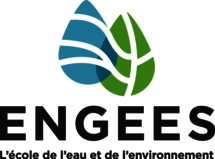
Insights from Humanities and Social Sciences
June 5-7, 2024 - National School for Water and Environmental Engineering of Strasbourg (ENGEES), Strasbourg, France
Heatwaves, droughts and floods are now more present in the global media, linked to the increased frequency and intensity of these extreme events. Nature-based Solutions (NbS) are presented as solutions to climate change and biodiversity loss. This concept emerged in the 2010s and was promoted by the International Union for Conservation of Nature (IUCN), which formally defined NbS in 2016 as “actions to protect, sustainably use, manage and restore natural or modified ecosystems, which address societal challenges, effectively and adaptively, providing human well-being and biodiversity benefits”. Nature-based Solutions (NbS) can play a role in managing water-related risks, especially to reduce flood risk in the context of climate change by promoting preservation and restoration of functioning ecosystems.
The concept of NbS is increasingly adopted and developed in States and territories strategies. However, it takes on different meanings depending on the actors and institutions that use it. This ambiguity can facilitate collective action in situations that accommodate a diversity of meanings. However, it also causes tensions between different actors and conflicting interests. Critical literature is still underdeveloped in the context of social sciences and humanities to better understand how this concept is being institutionalized and implemented at national and local scales.
This conference aims at bringing together critical research on the expectations of NbS in the area of water-related risks such as floods and droughts, expanding on the results from the project “Nature-based Solutions, from theory to practice: comparing France and the United States” (2021-2024) funded by INRAE (France's National Research Institute for Agriculture, Food and Environment) through the Post AgreenSkills Fund.
Registrations closed
SESSION 1
Governance: What types of governance for NbS?
What are the types of public action and the preferred instruments used to create public policies related to NbS and to implement NbS projects (e.g., mandatory policies, funding sources, centralized/decentralized governance structures, etc.)? When creating public policies related to NbS or designing and implementing NbS projects, what are the relationships among governmental agencies and institutions (at federal, state and local levels in the United States or supranational, national, regional and local in Europe), tribal governments, private actors, NGOs, industry and citizens? Is the adoption of the concept of NbS changing these relationships? Is the concept of NbS changing the government and/or governance of “nature”, territories or flood risk management? Finally, is the concept of NbS making possible to overcome the sectoral dimension of public action, which can threaten the achievement of the UN Sustainable Development Goals (SDGs)? Or is this concept enabling the mainstreaming of the preservation of biodiversity and nature in other areas of public action such as climate, agriculture and flood risk management?
SESSION 2
Conceptualization: What are the social representations of NbS?
NbS connect various actors, managers, elected officials, residents, associations, private companies, etc. How are NbS (the concept or the arrangements to which it refers) perceived by the managers and actors those involved in defining and/or implementing NbS projects? Is this concept appropriated, criticized, reinterpreted or transformed by the goals of specific public policies or particular interests? Do NbS reflect a new conceptualization of “nature”, of the place of nature in the city or of human-nature relationships? Does the concept of NbS contribute to the recognition of an entity in non-human beings?
SESSION 3
How are NbS being implemented in territories?
The concept of NbS has been developed in the international arena but is reinterpreted and implemented by territorial actors. Beyond thinking about the study of NbS through the prism of the implementation or diffusion/adoption of an international standard, it is interesting to analyze how territories (or places) modify the concept of NbS. How do territories where NbS are implemented influence the project design and implementation or the concept definition? How do the territorial, political or land ownership dynamics in these territories produce different types of NbS? Behind the generic concept of NbS, how is it translated locally?
SESSION 4
Research gaps: What future research is needed to better understand the concept of NbS and its potential?
What future research should be prioritized around NbS in the human and social sciences or according to multi- or interdisciplinary approaches with biophysical sciences? What is the dominant knowledge around NbS? How do different epistemic communities and scientific disciplines address NbS, and potentially reconfigure themselves in the light of this concept?







